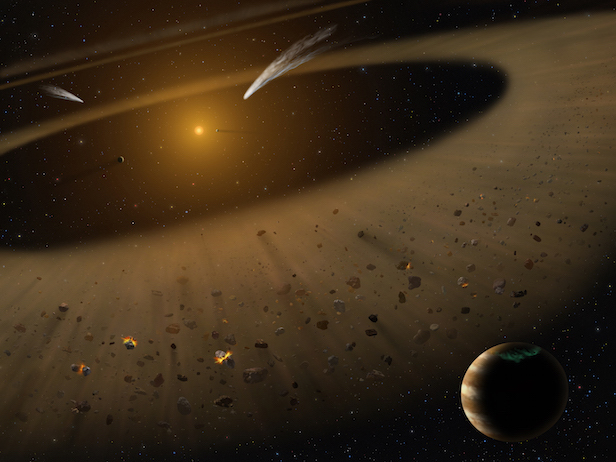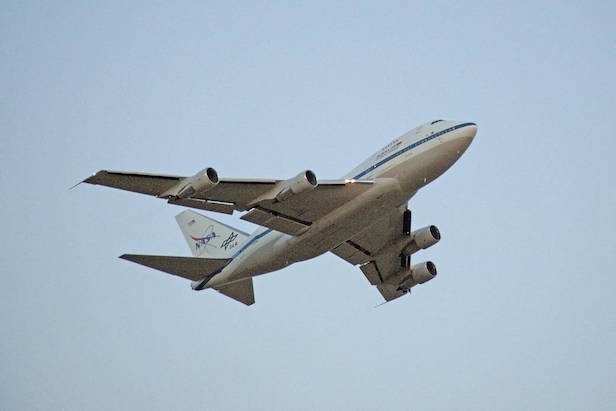Flying observatory uncovers a younger version of our Solar System
A planetary system suspected to be similar to our own has been found just 10.5 light years away

An artist’s impression of the Epsilon Eridani system, located 10.5 light years. Image credit: NASA/SOFIA/Lynette Cook
As the search for an extraterrestrial home continues, NASA’s Stratospheric Observatory for Infrared Astronomy (SOFIA) has identified a star only 10.5 light years away with a formation that has been suggested to bear a striking resemblance to our early Solar System.
Located in the constellation of Eridanus, the star Epsilon Eridani – or Eps Eri for short – has been hailed as a dead ringer for our Sun during its youth and takes pride of place at the centre of a debris disc, the name astronomers give to leftover material still in orbit around a star after planetary construction has completed.
Prior observations have shown that Eps Eri’s debris disc rests along its plane, meaning that there is ice, rocks and dust leftover from the planets’ formation. Furthermore, close observations indicate that the system has a planet similar in mass to Jupiter and orbiting the star at a distance comparable to the king of the Solar System’s orbit from the Sun.

Ready for take off: SOFIA heads to the stratosphere to observe the universe. Image credit: NASA/Carla Thomas
With the equipment upon SOFIA, including a 2.5-metre telescope and a mid-infrared camera named Faint Object Infrared Camera for SOFIA Telescope (FORCAST), Kate Su of the University of Arizona and her team were able to carefully analyse the SOFIA images and determine there is 2 narrow rings of warm debris, that if these rings were in our Solar System, one would be where the asteroid belt is and the other would be in the orbit of Uranus.
“The high spatial resolution of SOFIA combined with the unique wavelength coverage and impressive dynamic range of the FORCAST camera allowed us to resolve the warm emission around Eps Eri, confirming the model that located the warm material near the Jovian planet’s orbit,” says Su. “Furthermore, a planetary mass object is needed to stop the sheet of dust from the outer zone, similar to Neptune’s role in our Solar System. It really is impressive how Eps Eri, a much younger version of our Solar System, is put together like ours.”
Keep up to date with the latest space news in All About Space – available every month for just £4.99. Alternatively you can subscribe here for a fraction of the price!




